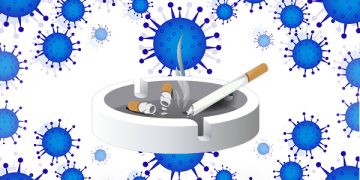Description:
Atrial fibrillation is caused by the electrical changes and disturbances in the upper chambers of the heart, the atria. In patients with this condition, the heart’s electrical signals originate in a disorganized and rapid pattern, which makes the heartbeat fast and irregular. The atria no longer contract normal and can lead to the formation of blood clots within the left upper chamber of heart.
Prevalence & symptoms:
Global burden of this pandemic is 43.6 million as estimated in 2016 and expected to increase by 2.4 times. 60-70% of the patients can be symptomatic while 15 to 30% of patients can be asymptomatic. Palpitation is most frequently reported symptom along with feeling of fatigue and tiredness with decrease in physical stamina.
Six symptoms, including palpitations, fatigue, dizziness, dyspnea, chest pain, and anxiety during AF, are evaluated with regard to how it affects the patient’s daily activity, ranging from none to symptom frequency or severity that leads to a discontinuation of daily activities.
Complications:
It can lead to episodes of paralysis( stroke) and responsible for 20-30% of ischemic strokes and leads to weakness of heart muscles (congestive heart failure) among 20-30% of patients as well early onset of forgetfulness and memory loss (Dementia). The risk of myocardial infarction( heart attack) is 2-fold increased among patients with Atrial fibrillation.
Risk of Atrial fibrillation based on underlying Medical diseases:
1 Heart failure: In contrast to the general population, AF development is 4 to 6 times higher in patients with HF
2 Chronic Kidney Disease: In a Japanese cohort, patients with glomerular filtration rate of 30 to 59 mL/min had 32% higher risk AF compared with individuals with normal renal function. For those with glomerular filtration rate <30 mL/min, the risk was 57% higher
3 Cancer: The risk of newly diagnosed cancer in the first three months after new-onset AF is almost 3-fold increased. Similarly, newly diagnosed cancer is accompanied by a significantly increased risk of incident AF
Treatment /Procedures:
1 Medical therapy: There are pills which can slow down the heart rate and help with controlling symptoms of palpitation. Broadly, it is grouped in to two categories : Beta blocker and calcium channel blockers.
There are pills called pill in pocket which can help setting you back in to normal sinus rhythm. There are group of other medicines, which try to keep the heart in to good rhythm called anti arrhythmic medicine. Examples of those medicines are amiodarone, sotalol & flecainide.
Blood thinner/Anticoagulant are prescribed to the patients based on the risk score and bleeding risk. Coumadin vs Novel oral anticoagulants can be prescribed to these patients.
2 Cardio-version: It is a procedure to set a person back in to good normal rhythm by applying patches on the skin and delivering electrical energy while pt is given light sedation. Patients are sent home on the same day after procedure.
3 Catheter ablation:  Catheter ablation is a minimally invasive procedure to treat symptomatic patients with irregular heartbeat by using the catheters to destroy the heart cells responsible for generating these irregular electrical currents.
Catheter ablation is a minimally invasive procedure to treat symptomatic patients with irregular heartbeat by using the catheters to destroy the heart cells responsible for generating these irregular electrical currents.
AF catheter ablation can be offered to the patients who have symptoms of AF not controlled with medicine and patients who have weak heart /heart failure with low ejection fraction ( measured by ultrasound of the heart (echo) ).
Success rate of A fib ablation: long term success rate for procedure is 50-60%.
References:
1. https://www.ahajournals.org/doi/10.1161/CIRCRESAHA.120.316340
2.https://www.escardio.org/Guidelines/Clinical-Practice-Guidelines/Atrial-Fibrillation-Management

Dr Bharat Marwaha, MD is practicing Cardiologist in U.S.A. He has published and presented more than 15 articles including in top 2 Journals of Cardiology in United States. He has received an “Academic Excellence Award” during his training. He has represented Ohio States at National Jeopardy Quiz Contest for doctors. He is a reviewer for Journal of Translation Medicine and Cureus.














